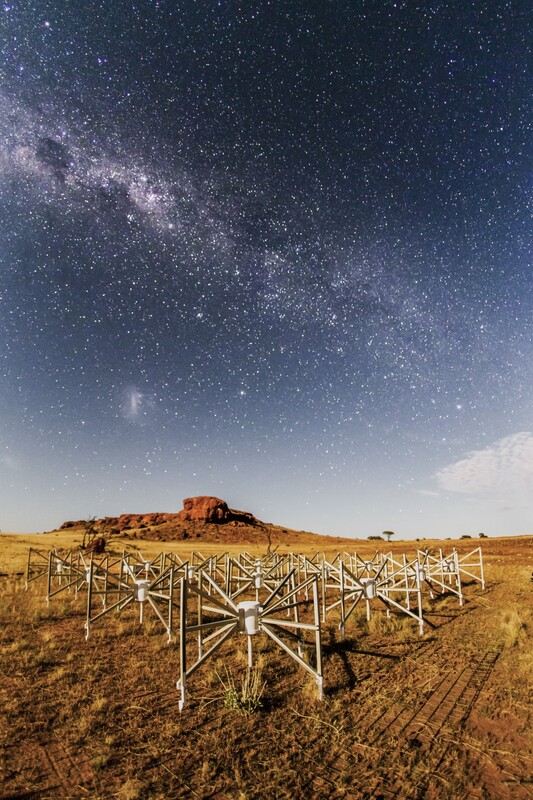
Australia’s radio telescope and computing facilities have a long history of surveying the sky, whether it be searching for radio galaxies in the far-off Universe or rapidly spinning neutron stars (called pulsars) in our own Galaxy. In a recently published pair of articles, a team led by researchers at the Curtin University node of the International Centre for Radio Astronomy Research (ICRAR) detail how they are achieving the latter – hunting for pulsars using the low-frequency Square Kilometre Array (SKA) precursor telescope, the Murchison Widefield Array (MWA), located at Inyarrimanha Ilgari Bundara, the CSIRO Murchison Radio-astronomy Observatory.
The Southern-sky MWA Rapid Two-Metre (SMART) survey aims to collect data covering the entire southern sky at low radio frequencies in search of new pulsars. The team uses the MWA to record the data, perform data checks and quality assurance at the Pawsey Supercomputing Centre (where the data are also archived), and then searches in earnest on Swinburne’s OzSTAR Supercomputer using processing time awarded by the Astronomy Supercomputing Time Allocation Committee (ASTAC). Over the lifetime of the project (upwards of five years), the researchers will analyse well over three petabytes of data and expect to find hundreds of pulsars, as well as provide measurements of previously known pulsars in a frequency range rarely explored.
In a ‘shallow search’ (low sensitivity) pilot project, processing only ~10% of the data collected to produce millions of candidates, and only inspecting ~10% of those candidates, already four pulsars have been discovered! The next stage will involve processing the full data sets, and will require significant computational resources, but will produce a legacy data set that will act as an important reference for future pulsar surveys with the SKA.
For details, please head over to the Space Australia story.
Support for the operation of the MWA is provided by the Australian Government via the National Collaborative Research Infrastructure Strategy (NCRIS), under a contract to Curtin University administered by AAL. AAL supports the OzSTAR supercomputer through the NCRIS program, while ASTAC is managed and operated by AAL with support provided by Astronomy Data and Computing Services (ADACS). ADACS was founded by AAL and is delivered jointly by Swinburne University of Technology and Curtin University.
